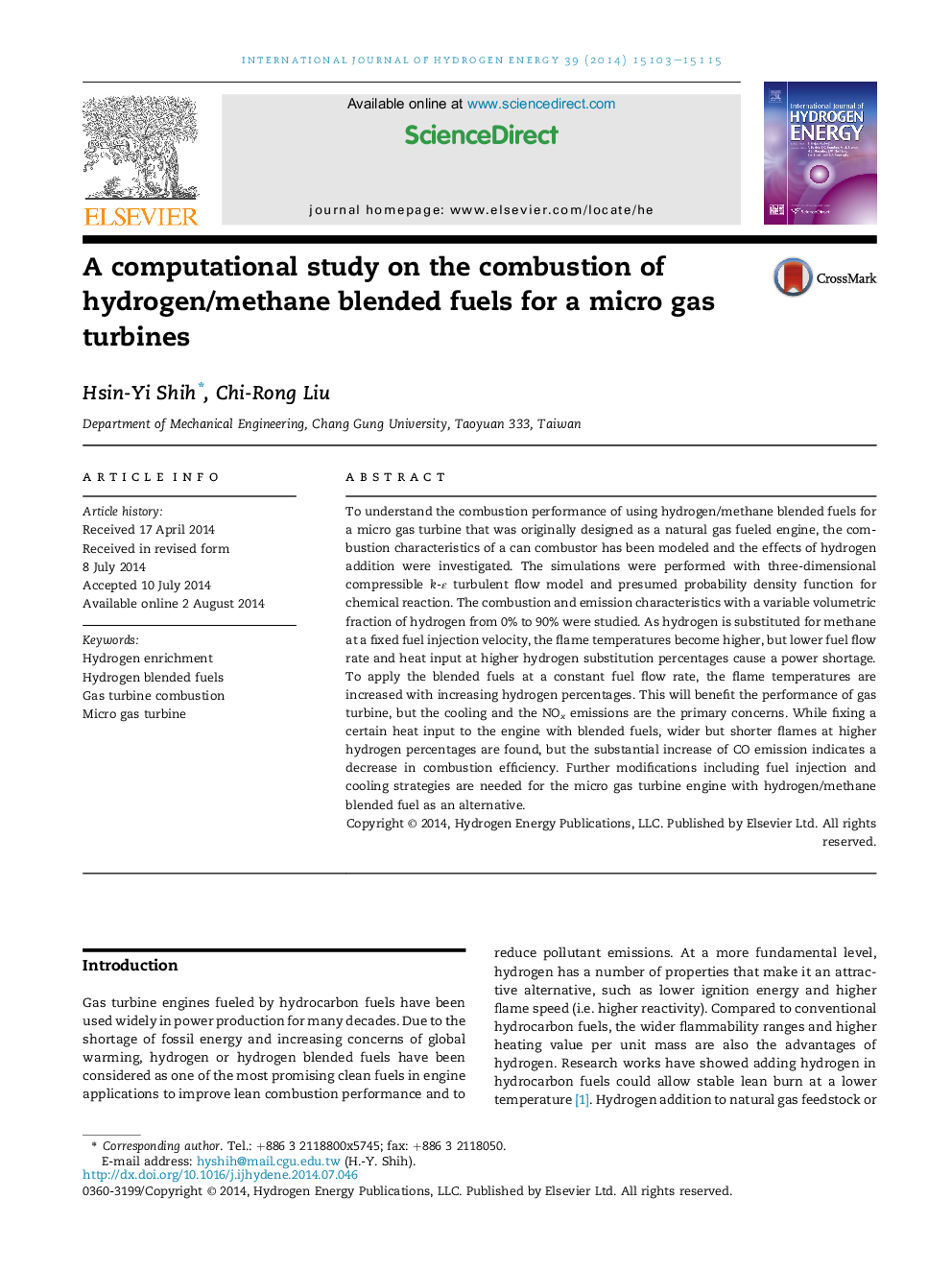| Article ID | Journal | Published Year | Pages | File Type |
|---|---|---|---|---|
| 7718410 | International Journal of Hydrogen Energy | 2014 | 13 Pages |
Abstract
To understand the combustion performance of using hydrogen/methane blended fuels for a micro gas turbine that was originally designed as a natural gas fueled engine, the combustion characteristics of a can combustor has been modeled and the effects of hydrogen addition were investigated. The simulations were performed with three-dimensional compressible k-ε turbulent flow model and presumed probability density function for chemical reaction. The combustion and emission characteristics with a variable volumetric fraction of hydrogen from 0% to 90% were studied. As hydrogen is substituted for methane at a fixed fuel injection velocity, the flame temperatures become higher, but lower fuel flow rate and heat input at higher hydrogen substitution percentages cause a power shortage. To apply the blended fuels at a constant fuel flow rate, the flame temperatures are increased with increasing hydrogen percentages. This will benefit the performance of gas turbine, but the cooling and the NOx emissions are the primary concerns. While fixing a certain heat input to the engine with blended fuels, wider but shorter flames at higher hydrogen percentages are found, but the substantial increase of CO emission indicates a decrease in combustion efficiency. Further modifications including fuel injection and cooling strategies are needed for the micro gas turbine engine with hydrogen/methane blended fuel as an alternative.
Related Topics
Physical Sciences and Engineering
Chemistry
Electrochemistry
Authors
Hsin-Yi Shih, Chi-Rong Liu,
